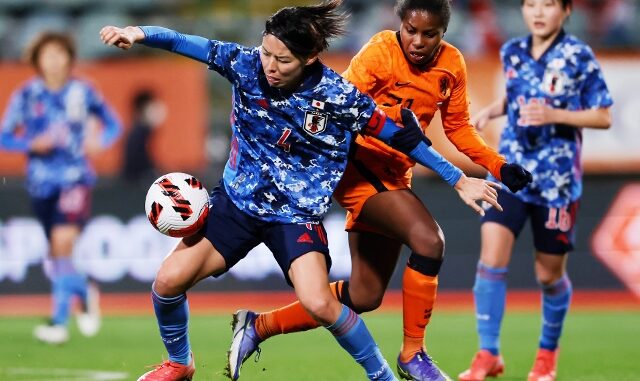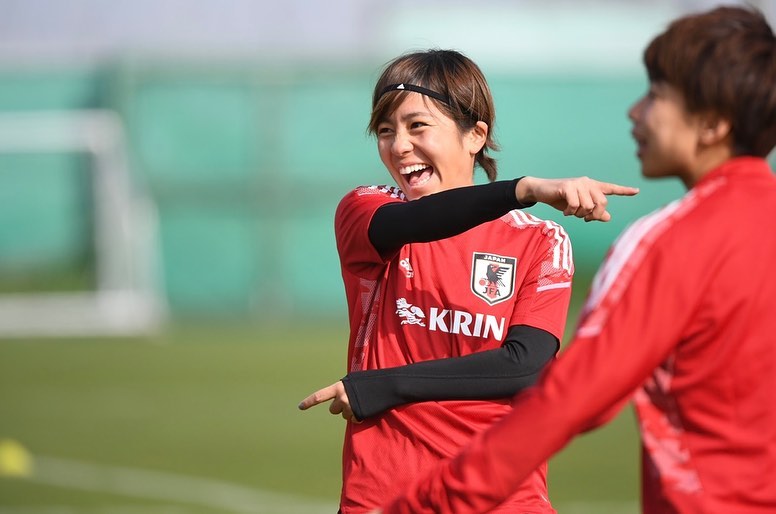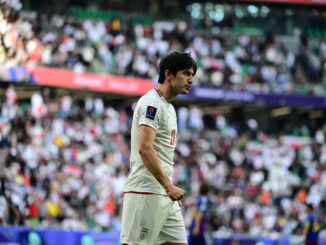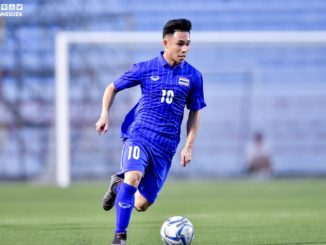
Futoshi Ikeda and his Nadeshiko side have assembled at the impressive JFA Dream Field training facility in Chiba for preparations ahead of the AFC Women’s Asian Cup India 2022.
Defending champions Japan are placed in Group C with South Korea, Myanmar and Vietnam.
Ikeda, who led the Japan U20 women’s national team to World Cup glory in 2018, took the baton from predecessor Asako Takakura back October of last year following a dire Olympics campaign. The former Urawa Reds player is now tasked with restoring the Nadeshiko’s reputation as a global powerhouse of women’s football.
Along with Australia, China and perhaps South Korea, Japan are amongst the favourites to go on and win the tournament. They are the second highest globally ranked team at the tournament at 13th, behind only 11th placed Australia.
Japan have played just two friendly matches under the new leadership, losing 2-0 to Iceland and drawing 0-0 with Holland back in November. Despite maintaining possession well in both games, the Nadeshiko failed to score a single goal over the course of the two matches; surely a pressing issue for Ikeda and his coaching team.
Ikeda has now registered his 23-player squad for his first competitive campaign as head coach. Seemingly he has opted for a healthy blend of experience and potential. Notably, on paper at least, there is only one natural left back in Asato Miyagawa and no clear holding midfielder.
Fourteen players selected for the Tokyo 2020 Olympics campaign feature in Ikeda’s India 2022 selection. Seemingly he feels that the base of the team should consist of players with major tournament experience.
Mana Iwabuchi of Arsenal, Yui Hasegawa of West Ham and captain Saki Kumagai of Bayern Munich are some of the household names listed, along with domestic stars such as Risa Shimizu, Yuika Sugasawa and Mina Tanaka.
Fresher faces include Urawa Reds defender Hana Takahashi, Mynavi Sendai’s Fuka Nagano and Tokyo Verdy Beleza’s Riko Ueki. It should be noted that Ikeda has worked with many of these new additions at U20 level and is familiar with their individual playing styles.
Notable omissions such as dazzling dribbler Hina Sugita, clinical playmaker Narumi Miura and rising star Yuzuho Shiokoshi have left many scratching their heads. At first glance an overhaul of the midfield combination is at hand.
Critics of Ikeda’s selection claim it to be far too experimental for this out-of-sorts Nadeshiko side. With the 2023 World Cup looming large, there are fears that an unsettled squad will see Japan fail to compete with the global powerhouses of the game when the time comes.
However, given Ikeda’s experience within the national team setup, team cohesion and on-the-field harmony may well be achieved sooner than some might think. Almost all of the players listed have also played together at club or international level and should adjust to each-others playing style with little hindrance.
That being said, playing football as a collective is common nature to the Japanese and their recent shortcomings cannot be attributed to a lack of team chemistry. Rather it has to do with their inability to unlock compact defenses, maintain composure in front of goal and compensating for physical disadvantages when contesting for the ball.
Indeed Ikeda’s tactical modifications will determine whether the 2011 world champions can return to the hazy heights of yesteryear, or not.
So what might those modifications be? Observations from the training ground suggest that Japan’s possession based, short passing approach will continue to form the basis of their game plan. This is, and likely always will be, the defining characteristic of Nadeshiko football.
Possession football is all well and good but it is often rendered useless if a team cannot break down an opponent’s defensive structure, as was the case for Japan at Tokyo 2020. Offering a solution to this, Ikeda has designed training exercise that sees players in possession choosing the correct passage of play based on various positional circumstances of the defending team. Choosing the most viable scoring opportunity possible, with a harnessed instinct, will go some way in alleviating the goal drought.
Off the ball Japan have historically struggled to regain possession via physical challenges and 50-50 duels. Ikeda has placed special emphasis on organised pressing from the forward line in an attempt to win the ball back through forced errors. When taking the job late last year he was quick to assert this as a key component of his overall game plan.
Deeper lying players such as centre midfielder Hikaru Naomoto and centre back Hana Takahashi have been practicing long range shots in training. In games where Japan struggle to break down stubborn defences, a little extra fire power may well catch the opponent off guard.
Thus far all the right noises are being made and Japan seem poised to bounce back at India 2022. How the moving parts of Ikeda’s setup will fall together and form an efficient unit, however, remains to be seen.
The Headliner: Mana Iwabuchi (Arsenal)
Little introduction is needed for fans of the women’s game. Iwabuchi is likely to play in the number ten role with one of Sugasawa, Tanaka or Ueki in front of her.

Dazzling dribbling skills, a natural instinct for goal and an inch perfect weight of pass are but a few of her strengths that are sure to trouble any defense in the tournament.
At the Olympics the majority of attacking manoeuvres were thread through her and fans can expect the Arsenal forward to be involved in the lion’s share of Japan’s goals at India 2022.
The One to Watch: Risa Shimizu (Tokyo Verdy Beleza)
Shimizu possess all the traits that make up a formidable modern right-back. Dribbling with her head up, she will often sprint the full length of her channel before delivering a highly accurate cross for an attacker to latch on to.
She may also cut inside and attack the area with the ball at her feet. Aside from contributions to chance creation, Shimizu also has a natural astuteness for defensive organisation, often dropping into other areas of the backline to provide cover when a teammate has been caught out of position.
The 25-year-old is an overlooked gem in this Nadeshiko side and would not be out of her depth in a top global league.
The Hot Prospect: Fuka Nagano (Mynavi Sendai)
A member the U20 World Cup winning squad of 2018, Nagano is likely to remain a preferred option for Ikeda. The playmaker was one of the few players to start both friendly matches in November and will probably rejoin her youth setup teammate, Honoka Hayashi, in the centre of the park.
Nagano is an excellent carrier of the ball and is able to beat players with her fancy footwork. She has a sharp eye for an incisive pass and can shoot with accuracy from range. This is perfectly illustrated by her wonder goal at the U20 World Cup that received a Goal of the Tournament nomination.
As discussed in our bumper 2022 AFC Women’s Asian Cup preview podcast this week, Japan and Australia meeting in the knockout stages is all but guaranteed to happen. So how could we not call in on friend of The Asian Game and Nadeshiko League treble winning manager Takayoshi ‘Taka’ Ishihara and hear his thoughts on how the potential encounter might go?
“Player-for-player I think Australia are the stronger side for sure. However, the Matildas often struggle against our quick moving, possession-based style of play and I feel this is the reason results have largely gone our way in the past. If we can do what we do best then I feel good about playing them again. Either way, it should be an exciting game!”
Taka Ishihara
Photo: KNVB
Listen to our 2022 AFC Women’s Asian Cup preview with Kat Khosrowyar, Samantha Lewis and Tom Engelhardt as we preview all three groups plus speak with Philippines coach Alen Stajcic




